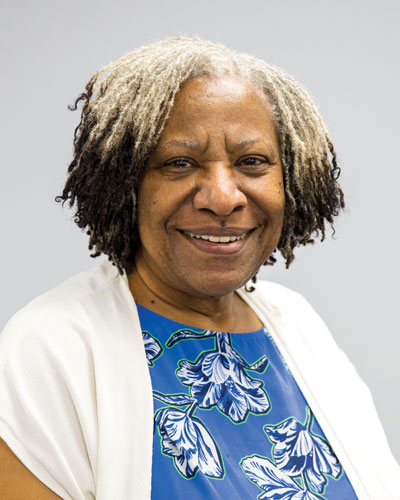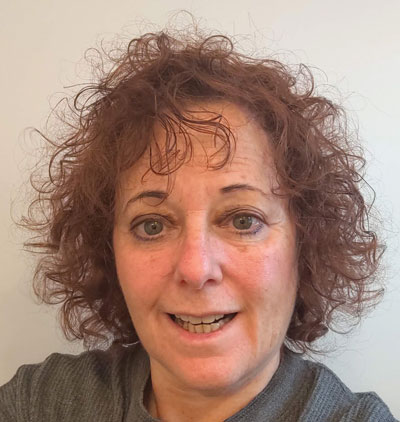
No one has to tell you that the price of groceries, gasoline and airfare is going up, but members of the general public might not immediately think about the cost of paper, how much you need to pay a bus driver, or the impact runaway inflation is having on employee turnover.
School business administrators, members of local boards of education and school leaders, however, think about all those things – and these days, they don’t make for very pleasant thoughts.
To learn more about how schools are navigating rampant inflation, we reached out to Cheryl Schneider, business administrator and board secretary at Millburn Township Public Schools in Essex County; Haqquisha Q. Taylor, business administrator and board secretary at Fort Lee Public Schools in Bergen County; and Valerie Wilson, business administrator at Newark Public Schools in Essex County.
In what areas is inflation hurting your district the hardest, and have you ever seen anything like this before?
Schneider: Inflation seems to be hitting everything right now. So, the larger expenses are having the biggest impact, such as health benefits, transportation, energy, and facility maintenance expenses. We’ve seen increases before, especially large increases in health benefits, but not everything at once. And while we’ve seen double digit increases in health benefits before, I don’t recall seeing such significant increases in these other areas of spending.
Taylor: As a result of COVID-19, ESSER funds complemented school budgets, expenses were down as student and staff travel was nonexistent so, from a financial perspective, districts fared well as evidenced by the Legislature increasing unassigned allowable surplus amounts from 2% to 4% of budgeted general funds. Now, the effects of the supply chain problems have really caused bottlenecks and all sorts of inflationary pressures. On every level – from food products to gas to energy prices to transportation prices – everything is going up. All this is on top of salaries. Just recently, we have had several employees offered more money to do the same job in other districts. Labor shortages are driving salaries higher and higher. There are bus driver, substitute teacher and full-time teacher shortages. Filling specialty teaching positions, for example, in the sciences, continues to challenge us. Recently, we boosted our pay for substitutes to $150 per day. Some districts will pay $200 per day for a substitute. The competition for good talent is driving salaries higher, and the fact that many are leaving the teaching profession exacerbates the inflationary pressures on salaries.
Wilson: I would say that it is hurting us the hardest in our transportation department in regard to being able to provide bussing services. It has been expensive – particularly servicing special education students and others with extenuating circumstances. Another area in which we have seen inflationary increases is in our food costs. We have an after-school extended day program, and we’ve received an increase in vendor pricing. It is the same vendor and same service, but it is an increase over 20%. Inflation is a factor in other areas, whether it be staffing or the availability of certain products.

When did you see inflationary pressures ramp up – and how long are you anticipating these pressures to last?
Schneider: We saw the inflationary rates increasing since the start of COVID, especially going into the 2020-2021 school year. However, the increasing prices were offset by limited-service provisions since, at least at the start of the year, we still had limited in-person classes. Transportation is a great example. Rates increased dramatically, but with driver shortages we had to reduce the number of routes and with fewer in-school days, there was less transportation needed. So, while rates were higher, with the reduction of services, the budgetary impact wasn’t as large as it could have been. But then the continued higher rates in subsequent years have had definite budgetary impacts. Unfortunately, there is no indication that these prices will ever go back to earlier levels, and it is still hard to say if they will even level out any time soon.
Taylor: It kind of struck or hit home a year ago when we reopened the schools in 2021. We began to “feel” the labor shortage as it manifested itself with supply chain slowdowns in virtually every sector. Supply chain slowdowns cause higher demand for fewer goods and services, causing inflationary pressures.
Wilson: I would say mid-pandemic as we adjusted to accommodate to the circumstances of the pandemic, and we were looking to re-establish operations. For a period of time, we were out of school, but as we began to slowly return, we began to experience needs and began to see it. In the food area, we saw it rather quickly because we fed students throughout the entire pandemic. In transportation, we really saw it as we returned to full operations.
One of the things we tried to do was hold vendors, so that we would have them when we went back to school in person. But what that required was for us to make payment – we needed to pay them even when we were not using them. I had to aggressively negotiate to get a reduction – there was a lot of discussion and a lot of back and forth. We did not pay full pricing, but we had to pay.
What is happening to the cost of busing and overall transportation costs? What steps have you taken to cope with increases?
Schneider: Transportation costs, specifically contracted route renewals, were controlled in the past with the consumer price index constraints set by the state. But with the escalating costs of fuel, driver pay, equipment costs, etc., contractors needed to increase the costs more – and so districts needed to bid out the routes rather than renew. We saw increases of around 12% in our route costs, and even with the higher costs, we still need to deal with driver shortages as substitutes are not available on days that drivers are out. For Millburn, over 50% of our routes are subscription busing. Our board determined a number of years ago that the subscription busing program should be self-sustaining, and so we were able to pass much of the increased costs on to parents who opted to pay the higher costs for the convenience of subscription busing. We did have to decrease the eligibility to participate in subscription busing to address the driver shortages, and reduce the number of routes we were running, but for the most part, the community was willing to pay the increased costs of the program.
Taylor: In transportation, we are talking about as high as 71% per diem increases, in some cases, for contracted out-of-district special education routes. One way we’ve responded is by continuing to increase the size of our fleet. We have gone from a fleet of four buses in 2016 to a fleet of 10 buses. That strategy helps because when you contract out, we are accustomed to doing so at the consumer price index rate. However, contractors can say we are not going to renew at the CPI because of inflation. Also, we currently offer health benefits to our drivers. But now the challenge is more schools are offering benefits, so the salary needs to be increased. One of our strategies is to see if we can pay our drivers a more competitive wage to retain them. Also, we are talking to neighboring districts – maybe we can pool students together on one route more cost effectively than each of us going out to contractors. We are prepared to ask questions about each district’s busing. Do you have buses? Are they being used? There may be a K-8 district that has a bus sitting unused after 3 p.m. We are preparing a survey to get information and send it out. This is not necessarily going to work for every district, but sharing the information could be very helpful.
Wilson: Our transportation director has been extremely creative. When we came back to full operation, with the bus driver shortage, we looked at that in addition to costs, and we began to do tiered routes. We have a single dismissal time and a single entry time for schools – and we have some 30,000 kids and a population of 4,000 special needs students. So, to get them around and to schools, we did a tiered busing approach. We started putting children together on a bus from varying schools. We needed the school population to be supportive of that, as it could mean some children were on the bus a little longer. We created a route that took children around the district. It was very successful; we are very pleased with it. It received minimal complaints, and the bus company has worked with us.
Have any of your previous moves tied to sustainable energy or energy efficiency eased some of the pain tied to energy price increases?
Schneider: We have found that in response to concerns with airflow and ventilation in relation to COVID that we are running equipment more than in the past. So, while we have been replacing more equipment with more efficient models, we have not seen much in the way of efficiencies to offset the rising energy costs.
Taylor: In 2015, we implemented an Energy Savings Improvement Plan where LED lighting was installed districtwide. Those improvements absolutely help to mitigate rising energy costs. We recently replaced windows at the high school, which not only has increased energy efficiency but vastly improved classroom and office temperature levels. We participate in ACES, but even that competitive energy services cooperative pricing, as a result of the volatile market, returned electric accounts to the local utilities.
Wilson: Right before the pandemic, we had gone out to the marketplace for the first time in maybe 30 years because we were under state control, and we went back to local control in 2020. So, right at the beginning, at the start of the pandemic, we had gone out to get financing for an energy savings initiative program so that it is self-sustaining. That involves the replacement of building systems, lighting, and the building envelope (the roof, etc.) to make our buildings waterproof and watertight. We have been going through that for the last 12 to 15 months, and we are beginning to see a return on investment.

How have inflationary pressures affected insurance coverage for your district? Have you made any adjustments in providers or coverage to cope with increases?
Schneider: We have had to adjust some of our limits. This wasn’t as much as a way to reduce costs but in some cases, the insurance companies are just not offering the higher limit programs any longer. We specifically saw this with our excess liability programs and with cybersecurity. Cybersecurity coverage was especially difficult to find because many of the companies seemed to be moving away from covering schools. And those policies we did find had many more restrictions than we’ve seen in past years.
Taylor: We began to see inflationary pressures on property casualty premiums, particularly umbrella and excess liability lines of coverage, primarily due to a tragic 2018 bus accident and the claims associated with it. Those premiums have tripled since fiscal year 2019. We, in Fort Lee, are members of the state health benefits plan whose medical premiums will see 15.6% increases in premiums. I am not surprised about the increases that will become effective in January. We have, in recent years, enjoyed premium reductions as well as a premium holiday. Premium increase pressures have been rising for years and now have come to a head. We did make a move in January 2019 for our prescription coverage to be outside of the state health benefits plan. That move has benefited us as we continue to experience favorable premiums compared to the state health benefits plan prescription premiums. One of the things we have done a good job at is managing our reserve accounts, so we have pretty healthy maintenance, emergency and capital reserves. We may need to consider using emergency reserves as they can be used to offset health care costs. Because of the high state health benefits premium increases, health care adjustments/waivers may be offered this budget cycle. A health care adjustment/waiver would give us the ability to increase our tax levy above 2%.
Wilson: We are seeing a 10-15% increase in premium or policy costs. We also had to redo our cybersecurity coverage. We are not part of the state health benefits plan and are self-funded this year, so we were able to realize some savings. We had to go out and really negotiate in terms of which insurance, and things of that nature and negotiate aggressively to retain our coverage.
We had put ourselves into private insurance some time ago – it’s been about seven months since we’ve been doing it. We’ve had a challenge in dealing with contributions. People were paying a percentage of the premium, and now they are paying a percentage of their salary, so districts have sort of made up the difference between the Chapter 78 and Chapter 44 contribution. But our increases are not as high as what the state is experiencing.
How is the current economic environment affecting hiring and employee turnover in your district? What adjustments, if any, have you made to try to ease any staffing shortages?
Schneider: We have seen more retirements than usual in the past few years. Our district has been fortunate enough to be able to find replacements in almost all cases. Where we have found difficulty is in the area of substitutes. We have also found difficulty finding replacements in the noncertificated support positions like bus drivers, custodians and other lower paying positions. We did increase the wages in some circumstances, like substitutes, but even with higher pay, there still is a shortage.
Taylor: We are trying to think outside of the box. For example, we hired a bus driver candidate who possesses a commercial driver’s license but no permanent school bus endorsement. We will support the candidate’s training. The candidate will serve as a bus driver’s aide until training is completed and the road test for the school bus endorsement is passed. If the driver leaves the district within a certain time period, the district will be reimbursed by the driver for the cost of the training and the test. Another strategy we have employed is to utilize, as needed, a custodian who possesses a CDL, as a bus driver. The economic environment is adversely impacting the ability to recruit and retain employees. Again, there is higher demand than there is supply of teachers, aides and bus drivers. To ease staffing shortages, we are considering enhancements to total compensation packages – increased wages, added benefits, and workday flexibility. During the last round of negotiations with the Fort Lee Education Association, we increased the amount we pay for class coverage in an effort to address the challenge of filling vacancies.
At our last Bergen County Association of School Business Officials meeting, where I serve as president, a business administrator shared that teachers who have been encouraged and then obtained their CDL, are serving as bus drivers in the morning, teachers during the day, then bus drivers, again, in the afternoon.
Wilson: We had staff present at Workshop 2022, Oct. 24-26 in Atlantic City, on the hiring practices we’ve put into place – and they were received very positively.
We have done a significant amount of advertising to attract candidates – we have advertised on buses and on Facebook. If you visit our website, you will see a video “Get to Work,” which has been our motto for this year. We were always working, so it’s not “Start Working,” – it’s “Get to Work.” Our video won a national public relations award.
We also reopened our teacher contract for salary only. We looked at our salary steps and increased our starting salary to $62,000 from the 50s, so we would be competitive and attractive. We are looking at providing a Get to Work payment of probably about $1,000 for our staff that have stayed with us during the entire pandemic.
How much of a gamechanger would it be if districts were able to increase their school budget beyond the existing 2% cap?
Schneider: That, of course, depends on the district, and their capacity/willingness for increasing taxes. I do feel that tax increases should be up to the local districts. If a district has local support to increase taxes, why shouldn’t they be able to do that? With so many expenses increasing at rates over 2%, the arbitrary 2% cap is forcing districts to reduce programming to balance their budget. Why shouldn’t districts be able to increase budgets to match their increasing expenses or to fund board approved initiatives?
Taylor: Many districts moved to a November election to avoid putting the school budget to a public vote in exchange for the ability to increase the tax levy up to the 2% cap, but I think some districts will move back to an April election and make the case to the community that more than a 2% tax levy increase is warranted. So, it would absolutely be a gamechanger if districts were able to increase budgets beyond the existing 2% cap. What goods or services are increasing by 2%? I can’t think of any – not eggs, not salaries, not fuel, not cars. As I mentioned earlier, I am hopeful that Fort Lee will benefit from adjustments or waivers offered during this upcoming budget cycle. Adjustments/waivers will give districts the ability to increase taxes above the 2% cap. I support a legislative move to increase the cap.
Wilson: Newark is one of those districts that demographically is considered one of the high-poverty districts. We are focused on cost containment – not cost reduction. But Newark has been underfunded by both the state and city for years as a result of the school funding formula. This is not new to us. I think New Jersey faces a very difficult challenge because the way we are funded impacts property owners very significantly. I think the state needs to look at what can be done because with the kind of inflation we are facing, the total cost of living in New Jersey has always been difficult – and it will impact who we can attract to the state to live here, and work here and therefore have children here. I don’t know what the solution is, but I think we have to look at it.
Are buying groups and consortiums useful during these times?
Schneider: A major advantage of the buying groups and consortiums is the efficiency around the procurement process – it’s not just about the costs. However, these groups are seeing the same inflationary rates and supply chain issues that individual districts are seeing, so consortiums aren’t the resolution to the increasing expenses. But at least the competitive pricing processes they utilize can work as benchmarks for where the market is in making purchasing decisions.
Taylor: Fort Lee participates in more than 12 purchasing cooperatives. It is important to note that a cooperative doesn’t guarantee better pricing. It would behoove business administrators to obtain additional quotes to ensure the best pricing. One of the benefits of buying groups and consortiums for the business administrator is that the bidding is done for them; so, the process of developing specifications and advertising is what the cooperative will do for you. The value of having the bidding process completed for you increases as our workloads increase. One of the cooperatives we use includes over 200 districts, so it has buying power. When a vendor places a bid to a cooperative to supply paper, they know they are going to be selling volumes, and they can price that ream of paper lower in anticipation of selling more. We are definitely trying to leverage cooperatives and joint insurance funds.
Wilson: We have worked with cooperatives nationally and statewide to meet our procurement requirements and to ensure that we are able to get good services in a timely fashion. We continue to use those very aggressively – and they have helped in terms of pricing and especially in terms of procurement.
How can local boards of education help their school districts confront challenges due to inflation?
Schneider: We are fortunate that our local board of education understands the challenges and has been supportive as we adjust, but I don’t know that every district has been as fortunate. One of the biggest ways boards could help is by recognizing how hard their staff is working. Everybody has been working harder than ever, having to adjust in every area. From both a staffing and a funding perspective, boards may need to realize that we all need to catch our breath. Some of the initiatives that were in motion may need to slow down a little. Long range budget planning to help fund some of these initiatives needs to be revisited. The increases that were projected have likely doubled or increased even more. It is hard to say if and when these new trajectories may slow down. So, boards need to realize that administration may need to relook at prior projections.
Taylor: Boards can understand what the challenges are … listening and hearing goes a long way. Board members need to be prepared to tell the community whether the tax levy will be above 2% to defend why that might be so. Board members can share with members of the community the difficulties districts are facing and welcome ideas for solutions. Board members can continue engaging their district administration so that they are familiar with the financial hurdles that an inflationary environment creates.
Wilson: Board members are not responsible for running the district, but it is imperative they understand what the challenges are – they must be informed and prepared. That is why we have meetings, so as questions arise and things are presented, they have a good understanding of what went into that decision-making process.
Thomas A. Parmalee is NJSBA’s managing editor.

